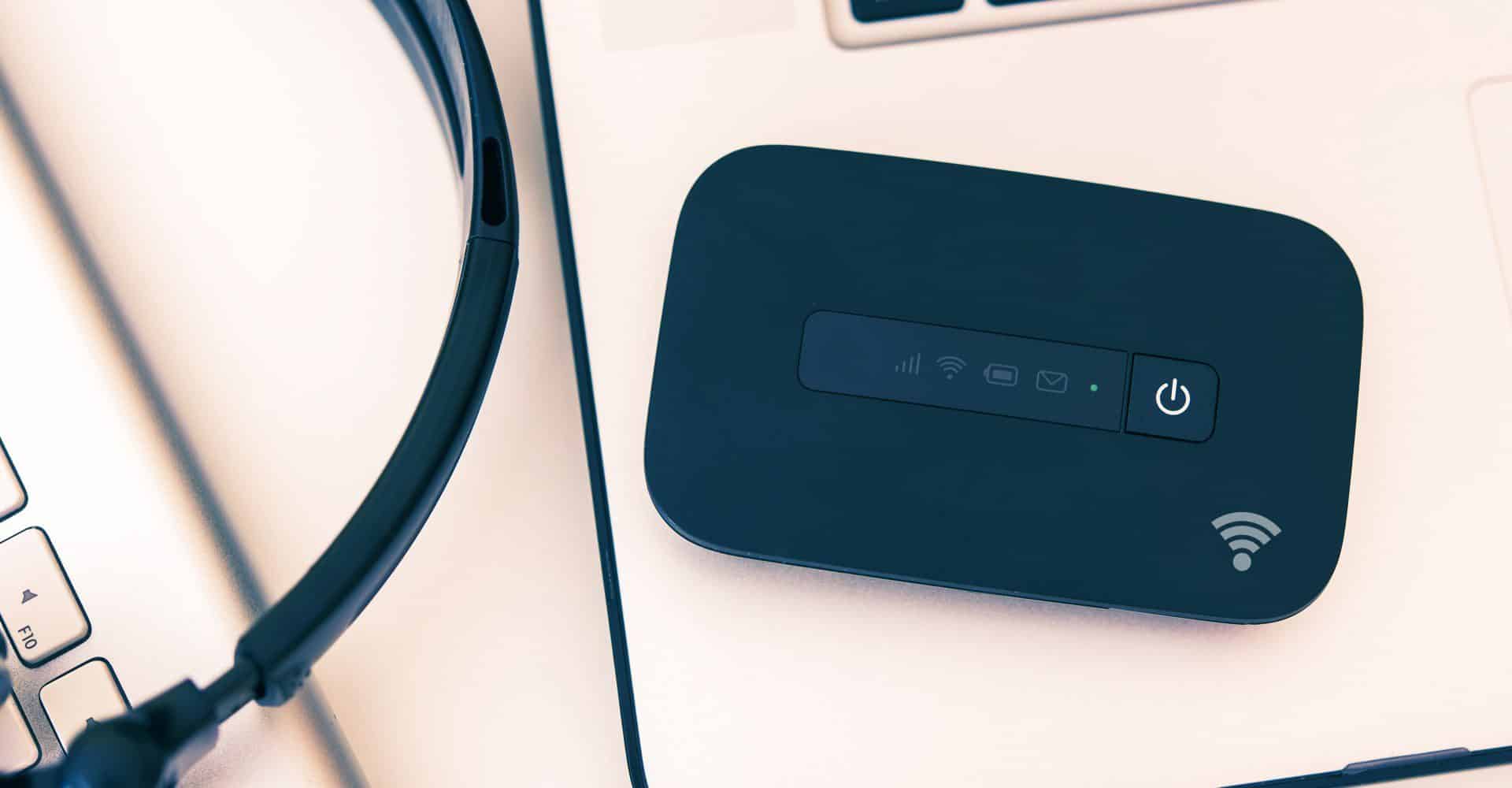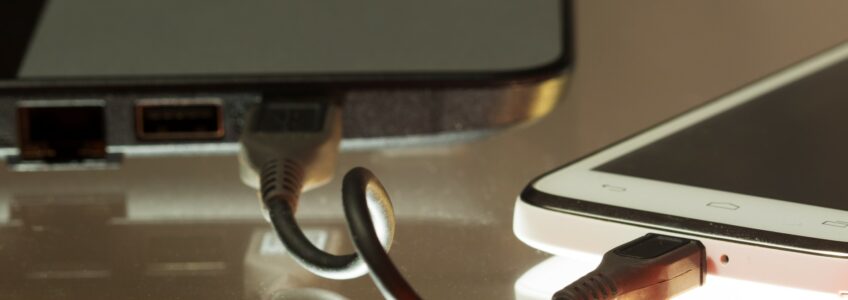Tethering vs. Hotspot: Which Should You Choose?
More and more, businesses are relying less on traditional office settings as they turn to remote work structures. Due to this shift to remote work, companies depend on mobile internet solutions to receive reliable broadband internet connections from anywhere.
Mobile internet solutions such as tethering and hotspots allow employees to tune into conference calls on the road and access important shared folders from different locations. Both solutions can provide fast internet access to enhance business operations. However, tethering and hotspots differ in how they secure an internet connection.
Between tethering and hotspots, are you curious to know which is the right choice for your business? Keep reading to explore the pros and cons of each mobile technology.
What Is Tethering?
Tethering is one way to obtain an internet connection through a mobile device. With tethering, you can use your existing data plan on your mobile phone to share an internet connection with another device, such as a laptop or tablet.
In order to share an internet connection with another device through tethering, you need to connect the two devices through mediums such as:
- A USB cable
- Bluetooth
- Wi-Fi
Traditionally, tethering was accomplished by physically connecting two devices with a USB cable. However, most modern smartphones allow you to set up a private, secure Wi-Fi hub that you can connect to on another device. This Wi-Fi hub is commonly referred to as a “personal hotspot,” which is not to be confused with the mobile hotspot devices we’ll explore later.
Tethering Pros and Cons
Mobile tethering offers an excellent solution for getting quick work assignments done when out of the office. However, it is typically not compatible with consistent use during business travel. Let’s take a look at the pros and cons of tethering for business operations.
Tethering Pros
One of the main positive benefits of tethering is convenience. When you connect other devices to a Wi-Fi hub on your mobile phone, the other devices share your cellular network’s data limits, speed, and reliability. Because of this, people know what to expect when they connect to a tethered network.
Since mobile tethering is based on an individual’s cellular data plan, many businesses opt for tethering if they don’t want to invest in dedicated mobile internet hardware for out-of-office operations.
Tethered connections achieved via a USB cable offer immense data security. Since the data is confined to the wires inside the USB cable, the connection is strong and typically not prone to interference.
Tethering Cons
If you want to create a personal Wi-Fi hotspot via tethering, the caveat is that most smartphones require an unlimited data plan to support personal hotspots. If your individual network plan has data limits each month, you may not be eligible to create tethered hotspots unless you upgrade your plan with your wireless service provider.
Not to mention, using your mobile phone to create a Wi-Fi hotspot requires a great deal of power, which in turn drains your phone’s battery at a fast pace. Additionally, some wireless service providers limit shared data, which could cause you to reach a data cap quickly when you share between devices.

What Is a Hotspot?
Dedicated mobile hotspots are different than personal hotspots that were mentioned above. While personal hotspots can be achieved through tethering, a mobile hotspot is a wireless router that connects to your service area’s cellular tower.
This wireless router provides multiple Wi-Fi-enabled devices with constant access to broadband internet. Unlike tethered personal hotspots created on smartphones, dedicated mobile hotspots provide high-speed LTE network coverage to up to 15 devices. Routers and modems are commonly used today because they are built to connect multiple devices to the internet simultaneously.
Mobile hotspots can be used in people’s homes, allowing each family member to connect all their devices to the same network. Additionally, mobile hotspots are often used in public spaces such as restaurants and coffee shops where customers can connect to the wireless network via a password.
Hotspot Pros and Cons
Just like with tethering, mobile hotspots offer advantages and disadvantages depending on their intended usage. Common pros and cons of mobile hotspots are:
Hotspot Pros
Compared to tethering which drains battery life, many mobile hotspots run on large lithium-ion batteries that can support Wi-Fi for 24 hours on battery power alone. With a mobile hotspot, you can achieve a day’s work with battery power instead of only a few hours.
Additionally, most mobile hotspot devices offer impressive internet speeds. Since mobile hotspots are specifically designed to connect multiple devices to the internet, their antennas provide a better connection with faster speeds compared to internet connections created on a mobile phone. Depending on your network provider and individual mobile hotspot, you can see speeds of up to 50 megabits per second (Mbps).
Mobile hotspot devices also provide robust security features. Many mobile hotspots support virtual private networks (VPNs), which allow users to create a safe, private Wi-Fi network. In the case of multiple devices, mobile hotspots will enable you to:
- Customize what can be seen in guest networks
- Track how much data each connected device uses
- Adjust guest access credentials
Hotspot Cons
Mobile hotspots don’t have too many drawbacks. The only potential disadvantages of mobile hotspots are paying for the physical device and having to set up an additional piece of hardware.
However, if you don’t mind paying for the mobile hotspot hardware and setting it up or carrying it around, mobile hotspots make for a fantastic solution for businesses.
Which Connection Is Best for Your Business?
Tethering and mobile hotspots both offer solutions for internet connectivity. While tethering uses cellular data on a mobile phone to provide internet access to other devices, a mobile hotspot connects multiple devices to the internet through a physical piece of hardware. When it comes to business operations, using a dedicated mobile hotspot is generally a more sustainable way to provide internet access to multiple devices.
If you’re looking for support or advice about which internet networks to use, reach out to Integrated Communications today. You can schedule a free network audit to determine the best telecommunications options for your business.
Five Key Steps to Improving WiFi Performance
 According to a recent Cisco study, 89% of all companies let their employees work on their own computing devices. Statista, an online statistics company, reports that the average American owns three devices, and that number is increasing. This surge in employee demand for WiFi strains the networks.
According to a recent Cisco study, 89% of all companies let their employees work on their own computing devices. Statista, an online statistics company, reports that the average American owns three devices, and that number is increasing. This surge in employee demand for WiFi strains the networks.
Previous coverage-based wireless network designs have ceased to meet current WiFi requirements. Optimizing wireless networks to accommodate coverage and capacity and taking additional steps to improve performance is a must.
Employees often deploy access points hastily, resulting in wasted effort, slow WiFi performance, and help desk requests from frustrated users. The five steps outlined below will help ensure optimum WiFi performance.
1. Plan WiFi Performance
This step involves asking stakeholders, such as managers and directors, how they expect to use WiFi. Questions to ask include:
- How many wireless devices will be used?
- What devices are they?
- How many access points will be needed?
- What settings must be tuned?
An infrastructure evaluation will also be necessary to determine whether it is possible to use or upgrade existing hardware.
2. Conduct a Wireless Site Survey
Wireless site surveys should be both pre- and post-deployment, and the former can be either predictive or AP on a stick. With a predictive survey, the engineer can plan the placing of access points using floor plans. With a manual AP on a stick survey, on the other hand, points are placed at different spots where readings are then taken. The post-deployment survey, in which the predictive survey and deployment are validated, is all too often neglected.
3. Perform Spectrum Analysis
Performing a spectrum analysis enables the engineer to pinpoint sources of interference in the 2.4- or 5-GHz ranges. Wireless video cameras, microwaves, and noise-emitting devices are all possible sources of interference.
4. Shut off 2.4-GHz Radios
This part of the spectrum is one of the most overcrowded, and large numbers of 2.4-GHz radios are in use. Three non-overlapping channels to use in that range exist in the United States. With many access points deployed, engineers must plan to reuse all of these and avoid co-channel interference. To make the final decision to turn off 2.4-GHz radios, one must know which devices will be using WiFi.
5. Avoid Co-Channel Interference
Co-channel interference occurs when coverage in the same area, with the same channel, is provided by more than one access point. Multiple access points serving clients on a single channel severely degrades wireless communication, depriving each device of the airtime that it can have.
To avoid this kind of interference, the engineer should make sure that each access point provides a carefully-planned cell size on a set of channels that do not overlap, thus ensuring that each client receives the optimum amount of airtime.
Taking these five steps will help optimize a company’s wireless networks and improve WiFi performance.

